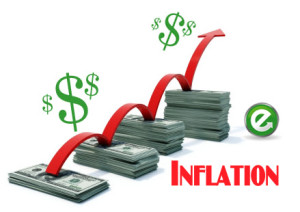About two weeks ago, the US government published their final inflation numbers for 2015. The inflation number for the year was low, really low, like 0.1% low. This is a crazy low inflation rate. Just to put that in perspective, since 1950 (the year Grandpa Fox was born, incidentally) there have only been two years that have had lower inflation readings, 1955 (-0.4%) and 2009 (-0.4%).
The low inflation numbers were primarily driven by the plummeting oil prices, and how that has translated to cheaper gasoline and, to a lesser extent, cheaper home heating costs as well as things related to oil prices like airline tickets. Those costs were low enough to offset price increases in areas like housing and food.
This is all well and good, but what does it matter? As a loyal Stocky Fox reader, you’re probably asking the more important question, “Is the low inflation good for me or bad for me?” There’s a lot of debate on this issue about what the optimal level of inflation is for the larger economy. Obviously inflation that is too high is bad, but many also argue that inflation that is too low is bad as well. There’s a lot of deep water there that I won’t tackle in this post. But if you look at things purely from a personal perspective of you being a saver, low inflation is always good and the lower the better.
How much is a 0% inflation year worth to you?
Let’s use an example of Mr Grizzly. He’s a spry 30-year-old who starts saving $1000 per month, has an average investment return of 6% but faces inflation 3%. By the time he’s 65, his honeypot will be worth about $1.4 million, but as we know because of inflation that would only be worth $500,000 in today’s dollars. That’s still a lot of money, but inflation certainly took a big bite out of it.
Obviously we know that the impact of inflation can be enormous (and I maintain, it’s overstated), and if we assumed inflation was 2% instead of 3%, then his honeypot at 65 would be worth $710,000 in today’s dollars instead of $500,000. That’s powerful stuff.
But that assumes for several decades that inflation is lower. Who knows what the future holds. In the past 30 years (1985 to 2015) inflation has averaged about 2.7%, but in the 30 years before that (1955 to 1985) inflation averaged 4.6%. Those are big swings and show how hard it is to predict inflation over really long periods of time.
Let’s look at Mr Grizzly’s situation again. Remember he’ll have $1.4 million when he turns 65, but that’s only worth $500,000 in today’s dollars. That’s assuming ever year has 3% inflation, but what if one of those years was a 0% inflation year. Just one year. All the other 34 years stay the same, but only one year changes. This is kind of like the scenario that just happened in real life, 2015 had 0.1% inflation and then assume the next 34 years go back to that 3% average. In this case, the impact of that one year of no inflation increases his $500,000 by about $15,000!!!
Doesn’t that seem like a lot? Mr Grizzly didn’t save any more nor did he invest any differently. He just looked at the inflation number and saw that in one year during his investing lifetime, inflation was zero. And for that effort, his honeypot will be worth $15,000 (in today’s dollars) more to him than it would have otherwise been. That’s a 3% increase!!!

The point of all of this is as investors, we got handed a nice little gift from the investment gods in 2015 in the form of no inflation. While most people are understandably focused on their returns, which in 2015 weren’t all that hot, there’s not nearly the attention given to inflation. But we can see from the example with Mr Grizzly that this can be a really positive effect.
So there you go. I always root for lower inflation, and I was super stoked to see it stay so low, to the degree I trust the CPI readings.

One thought to “2015 was an awesomely tame year for inflation”